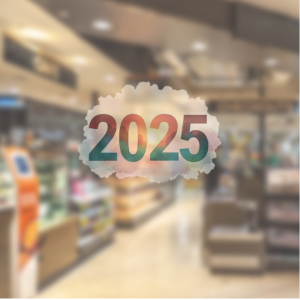
Insights
What’s In Store for Retail: Industry Trends to Watch

As uncertainty around the state of the economy lingers due to inflation, retailers need to be thinking about how they keep price-conscious customers engaged. Many retailers have remained focused on moving ahead with roadmaps centered around enhancing their omnichannel presence and customer experience through new technology, AI, and innovative offerings. Here we explore the top trends all retailers should being watching.
1. Improving Operational Efficiency with AI
Since the mass adoption of large language models (LLMs), the conversation around Artificial Intelligence (AI) has been largely focused on LLM tools like ChatGPT. However, there are many other AI applications beyond LLMs that businesses should be leveraging. Mike Streams, Partner at W. Capra, stated, “As we shift towards a new normal with AI, organizations should be thinking about which functions their business is performing manually today where the opportunity to automate exists.” Some key areas with opportunities to leverage AI include customer support, payments/front-end commerce, internal collaboration, and digital marketing. Streams continued, “The focus should be on the real-life application of AI in these areas and how to best utilize existing data to optimize processes and improve operations.”
When determining which areas of the business AI can support, having a strategic vision is imperative to ensure AI doesn’t become another hype cycle for your organization. “Once you’ve identified potential opportunities, the next step is to tap into your proprietary data to align your organizational decisions to business outcomes,” explains Daniel Kahan, Associate Director at W. Capra. “It’s not enough to merely identify an opportunity to personalize product promotions. To put your data to work, you need to understand how personalization can help to optimize average order value, inventory management, and customer retention.”
2. Data Monetization Heads Towards Data Consolidation
Ad budgets continue to shift towards retail media across all retail industries with the expectation that spending is likely to double in the next four years. At this point, most big box, major retailers – those with a large enough scale and data footprint – have launched a Retail Media Network (RMN). Smaller and regional retailers are now starting to introduce their own networks (such as Wawa and Casey’s in the C-store industry), but many retailers lack the data and audience scale to truly compete with that of major retailers like Walmart or Amazon. On the advertiser side, the biggest challenge they face with RMNs is having the capacity to manage, measure, and compare performance across several networks at the same time. John Reiss, VP of Business Development at Axonet, a W. Capra company, explained, “CPG advertisers now have dozens of retail media networks to manage creating the tedious job of tracking and measuring results of many different campaigns. That’s why data consolidation and aggregated retail media networks are the next evolutionary step in retail media growth.”
Reiss continued, “An aggregated network combines first-party data from multiple retailers of similar offerings into one network while guaranteeing secure data collaboration. Not only does this benefit retailers of all sizes – especially smaller ones – but it appeals much more to CPG marketers because they can manage their ads across multiple retailers within a single environment on that network. This is particularly beneficial to the C-store vertical since it’s such a fragmented industry.” As retail media growth shifts more towards the aggregated network approach with new RMNs like Axonet, mid-tier and independent marketers will be able to reap its benefits much more than if go they at solo.
3. Unified Commerce
The shift towards “digital”, heightened by the COVID-19 pandemic, has forced retailers to focus on creating an omnichannel experience that appeals to today’s shopper: someone who shops both in-store and online and wants a seamless experience across both channels. Retailers are striving to unify their commerce channels to meet this demand by elevating personalization within the customer experience journey and streamlining operations at the same time. Loren Allston, Lead at W. Capra explains, “When it comes to payments, customers want to have the ability to pay with the same method both in-store and online, whether that’s a Visa card or Apple Pay, as many payment methods are linked to a loyalty program. With more modernized technology coming to market, retailers are working to implement new payment gateways and orchestration solutions to be able to meet these customers’ expectations.”
Allston continued, “Beyond customer experience improvements, retailers are also seeing streamlined operations and cost savings associated with omnichannel commerce. One piece of that is PCI compliance: organizations that operate several distinct channels of commerce must go through the process of ensuring each one of those channels is compliant individually. When your channels are unified, maintaining and proving compliance is simplified and leads to reduced operational and PCI-related costs.”
4. Innovation Around Food & Beverage Offerings
As the lines between industries continue to blur, retailers across verticals are expanding their product and service offering to meet the demands of customers. One aspect of that is the introduction of new food and beverage offerings by merchants in restaurants and non-traditional food service industries like convenience, grocery, and general retail. With increased customization and personalized touchpoints, merchants are implementing more menu diversification and innovation with food and beverage to keep customers engaged. However, merchants are facing challenges on the technology side that may be delaying their ability to bring new products to market.
Loren Allston, Lead at W. Capra, shared, “Food programming has always been custom built into POS solutions. With many merchants working to shift from legacy POS systems to modern ones, they are facing challenges with migrating their food program over, which in turn is causing delays. But we’re starting to see innovation in this space with new solutions coming to market that will support this process by providing an electronic chip at the order kiosk. This is an area that retailers should keep a close eye on when updating their roadmaps, as we expect much more exploration and growth on how to improve ordering, food program management/execution, and the overall customer experience in the near future.”
5. Keeping Systems Compliant Across Channels
With the shift towards unified commerce comes the question of how to maintain security and compliance across all systems. As cyber-criminals continue to use AI to find new ways to breach security walls and reach valuable data, there’s an increasing need to ensure all channels and devices are secure. With new PCI DSS 4.0 requirements on the horizon, many retailers are focused on how to become and prove compliancy. Shelli Moring, PCI Lead at W. Capra, explained, “Unified commerce brings the need for unified security. With PCI, proving compliancy across unified systems often requires a tailored approach. In the convenience and retail fuel industry, measures to prevent fraudsters at the pump are increasing with the push to input PCI-validated point-to-point encryption (P2PE) for better cardholder security. Despite new security challenges that come with unified commerce, it can ultimately lead to a more streamlined approach as long as security is prioritized in the merchant’s roadmap.”
6. Continued Buzz Around Real-Time Payments
Real-Time Payments (RTPs) continue to be a hot topic in the payments industry, but the path to practical application has been unclear. PayPal’s Venmo and JP Morgan’s Zelle are some of the biggest players in Real-Time Payments, however they still have very small scale in the retail industry. Loren Allston, W. Capra Lead explained, “Everyone keeps discussing real-time payments, but there’s a question of who in retail is using these applications for retail purchases. Real-time payments are very appealing, especially as digital shopping experiences have created a consumer expectation of near-immediate payment processing, but retailers are facing challenges around the business case for real-time payments and how to implement the technology.”
“With increasing fees on card-not-present transactions, major enablement projects to support RTPs seem to be getting deferred or cancelled as major card companies focus on combating these changes,” Allston continued. As we discuss real-time payments with retailers, they should be examining where and how real-time payments are being used, and then, based off those answers, determine whether they fit into their technology and payments roadmap.”
For further discussion on how to position your organization for success in any of the domains listed above, please reach out to us at [email protected].
Related Insights
6 Reasons Convenience and Energy M&A Is Poised to Soar
While mergers and acquisitions have always been a part of the landscape in the convenience and energy industries, our experts […]
The Cost of Poor Quality Assurance for Point-of-Sale and Back Office Systems in Petroleum Retail
Quality Assurance (QA) is vital to ensure that those who use the tool daily can replicate basic functions AND access the advanced technology and process automation they were promised during sales demos.
CSP Magazine – What C-Store Retailers Need to Do to Succeed in 2025
This article, by W. Capra’s Tom Newbould as a guest author, was published in the February 2025 edition of CSP […]
The Crucial Role of Quality Assurance for Rapidly Evolving Retail Petroleum Technology
The petroleum industry is undergoing a period of unprecedented transformation. From the rise of electric vehicles to the adoption of […]
Want to stay in touch? Subscribe to the Newsletter










